Young Children’s Sense Of Identity IELTS Reading Answers
4 min read
Updated On
-
Copy link
Table of Contents

Limited-Time Offer : Access a FREE 10-Day IELTS Study Plan!
The Academic passage ‘Young Children’s Sense Of Identity’ is a reading passage that appeared in an IELTS Test.
It contains some of the IELTS reading question types. If you are interested in familiarising yourself with all the question types, don’t hesitate to take an IELTS reading practice test.
Young Children’s Sense Of Identity

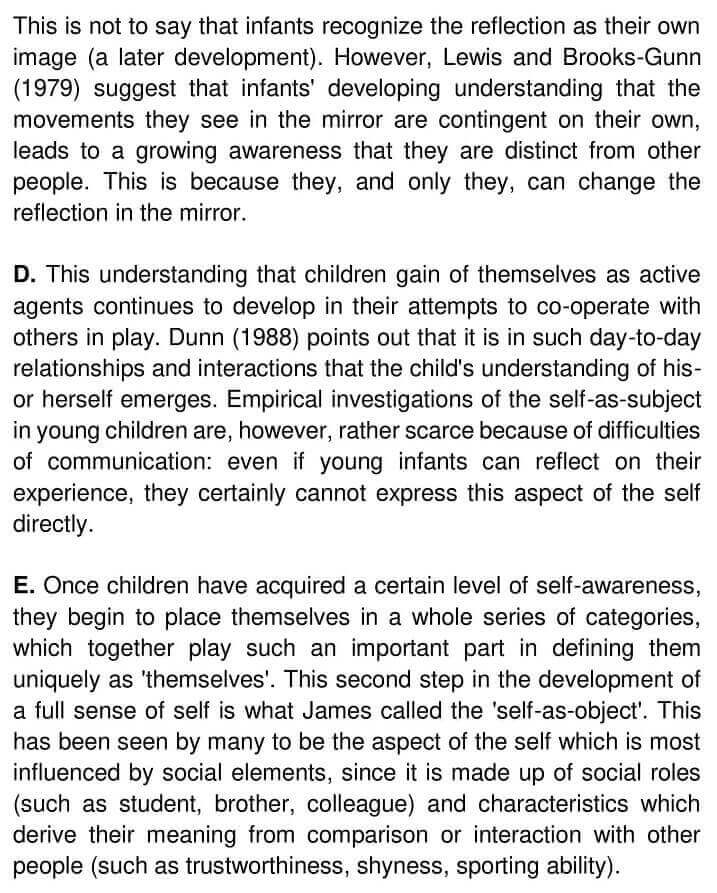
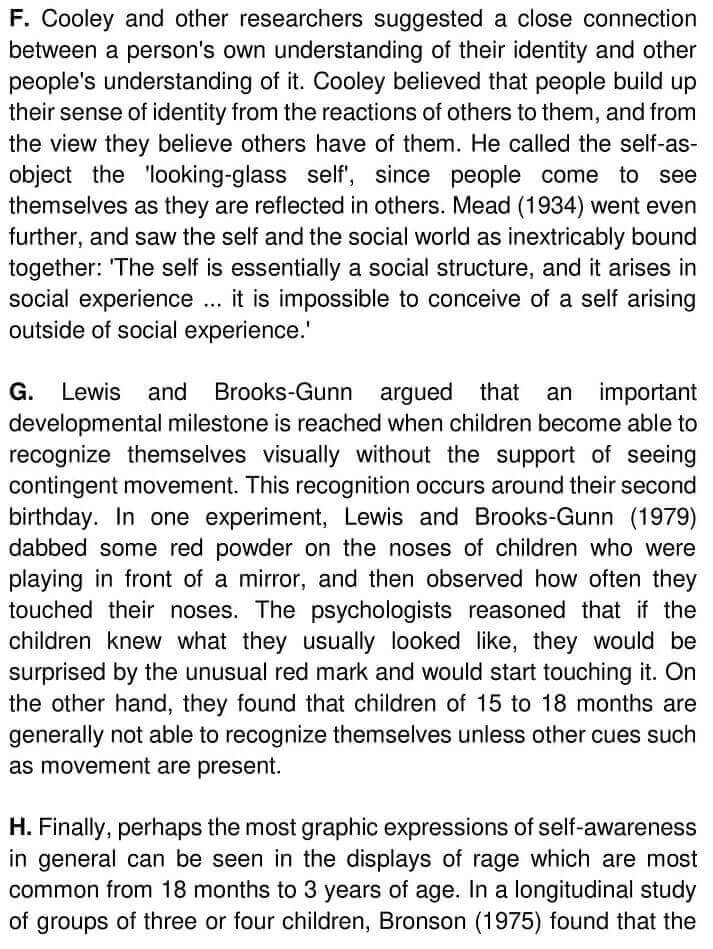
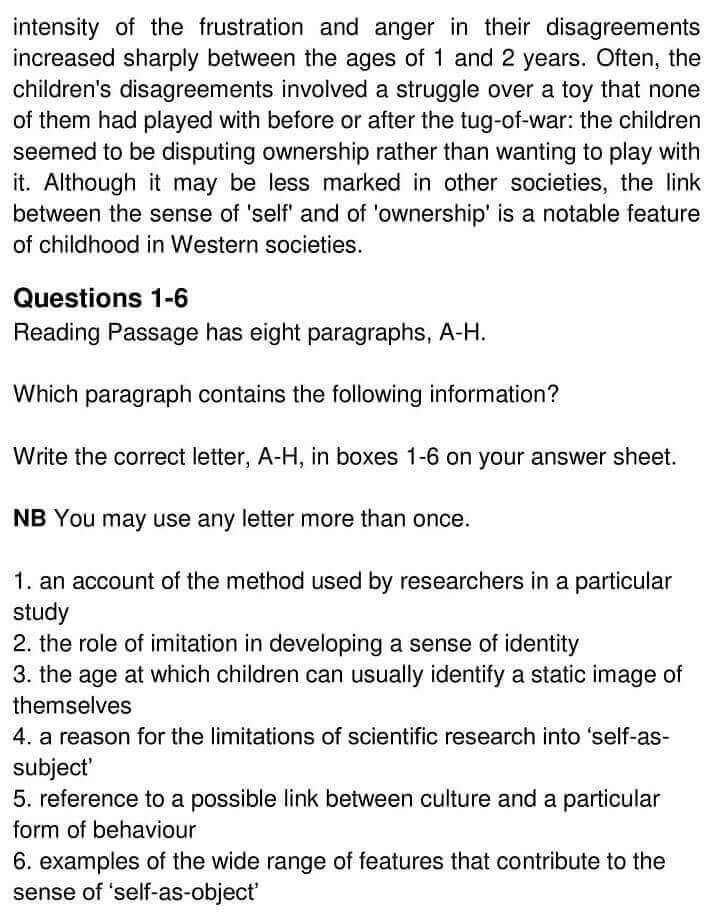

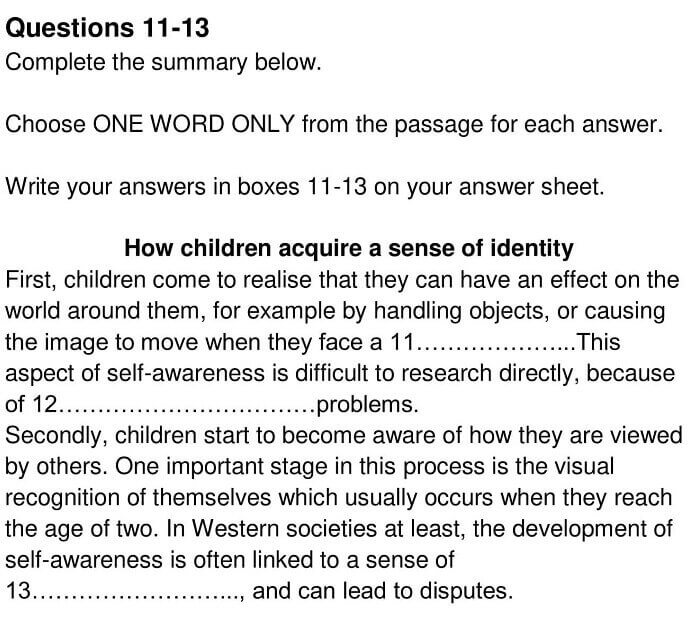
Answers
Unlock Answers
| Question number | Answer | Keywords | Location of keywords |
|---|---|---|---|
| 1 | G | In one experiment, Lewis and Brooks-Gunn (1979) dabbed some red powder on the noses of children who were playing in front of a mirror, and then observed how often they touched their noses. | Paragraph G;
Line 3 |
| 2 | C | Another powerful source of information for infants about the effects they can have on the world around them is provided when others mimic them | Paragraph C;
Line 1 |
| 3 | G | children of 15 to 18 months are generally not able to recognize themselves unless other cues such as movement are present. | Paragraph G;
Last line |
| 4 | D | Empirical investigations of the self-as-subject in young children are, however, rather scarce because of difficulties of communication: even if young infants can reflect on their experience, they certainly cannot express this aspect of the self directly. | Paragraph D;
Last line |
| 5 | H | Although it may be less marked in other societies, the link between the sense of ‘self’ and of ‘ownership’ is a notable feature of childhood in Western societies. | Paragraph H;
Last line |
| 6 | E | the aspect of the self which is most influenced by social elements, since it is made up of social roles (such as student, brother, colleague) and characteristics which derive their meaning from comparison or interaction with other people (such as trustworthiness, shyness, sporting ability). | Paragraph E;
Last line |
| 7 | D | it is impossible to conceive of a self arising outside of social experience.’ | Paragraph F;
Last line |
| 8 | B | Cooley (1902) suggested that a sense of the self-as-subject was primarily concerned with being able to exercise power. | Paragraph B;
Line 5 |
| 9 | E | Bronson (1975) found that the intensity of the frustration and anger in their disagreements increased sharply between the ages of 1 and 2 years | Paragraph H;
Line 2 |
| 10 | C | infants’ developing understanding that the movements they see in the mirror are contingent on their own, leads to a growing awareness that they are distinct from other people. | Paragraph C;
Line 5 |
| 11 | Mirror | This is because they, and only they, can change the reflection in the mirror. | Paragraph C;
Last line |
| 12 | communication | Empirical investigations of the self-as-subject in young children are, however, rather scarce because of difficulties of communication | Paragraph D;
Last line |
| 13 | ownership | children’s disagreements involved a struggle over a toy that none of them had played with before or after the tug-of-war:the children seemed to be disputing ownership rather than wanting to play with it. | Paragraph H;
Line 3 |
Check More IELTS Reading Answers
Also check :
Practice IELTS Reading based on question types

Start Preparing for IELTS: Get Your 10-Day Study Plan Today!
Recent Articles

Nehasri Ravishenbagam

Haniya Yashfeen

Haniya Yashfeen

Haniya Yashfeen
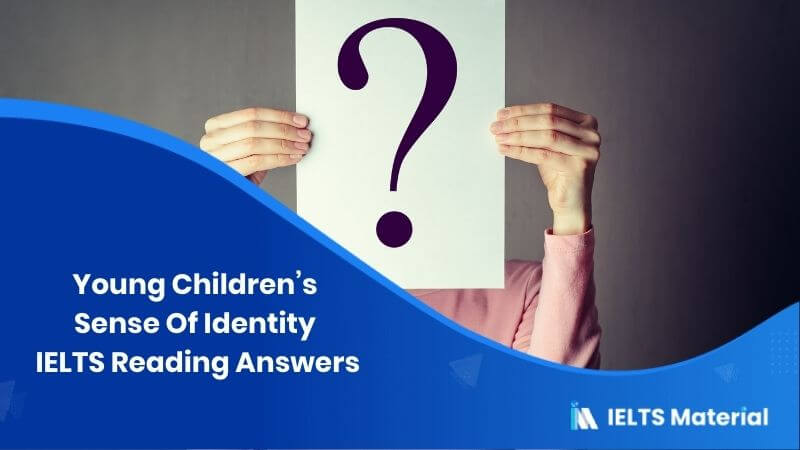



Post your Comments